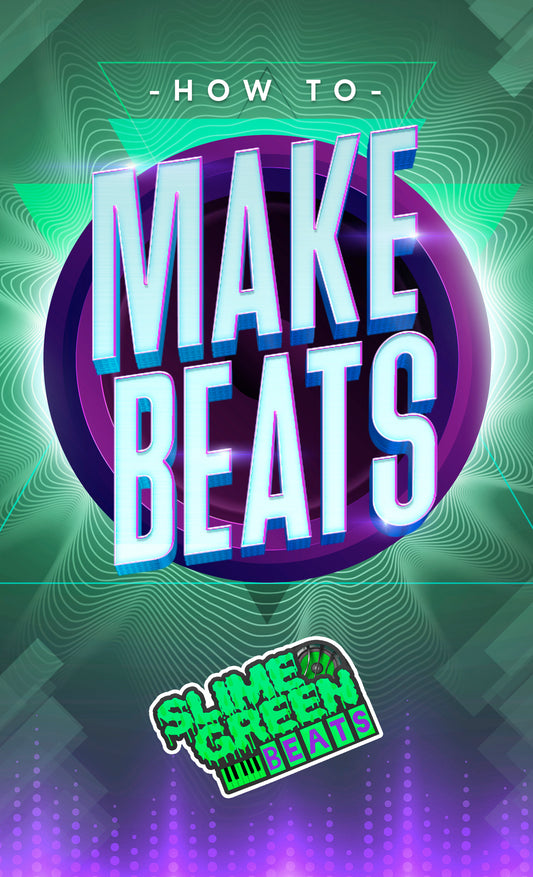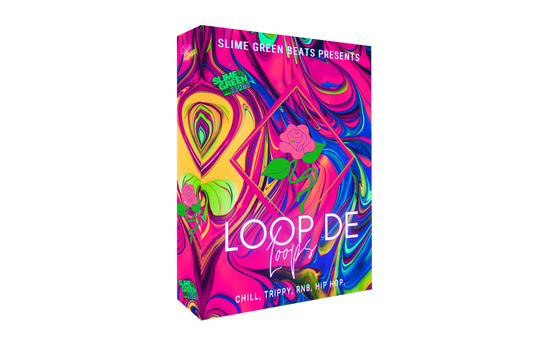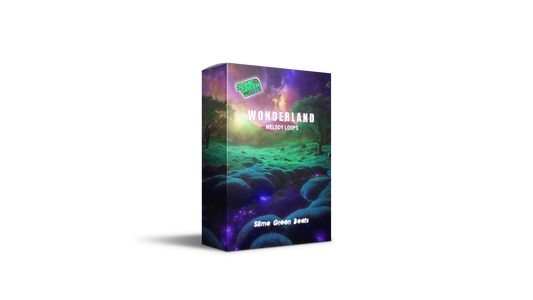Lo-fi music is all about creating those laid-back, chill vibes that make you feel like you're wrapped in a cozy blanket. It's not about perfection; it's about capturing that raw, imperfect sound that feels nostalgic and real. Whether you're new to music production or a seasoned pro, diving into the world of lo-fi can be a rewarding experience. With a few tips and tricks, you can start crafting tunes that resonate with listeners and bring a sense of calm to their hectic lives.
Key Takeaways
- Embrace imperfections in your music; they add character and warmth.
- You don't need expensive gear to make great lo-fi music; start with what you have.
- Sampling is a key element; explore jazz, soul, and old-school hip hop for inspiration.
- Simple drum patterns and a touch of swing can make your beats more engaging.
- Use effects like tape saturation and reverb to create a nostalgic atmosphere.
Unleashing Your Inner Lo-Fi Wizard

Why Perfection is Overrated
So, you want to dive into the world of lo-fi music? Great! The first thing you need to understand is that perfection is totally overrated. Lo-fi is all about embracing those little quirks and imperfections that make your music sound like it’s playing from an old cassette found in your grandma's attic. Seriously, if a track sounds too polished, it might just lose its charm. Think of it like wearing your favorite worn-out sneakers instead of shiny new ones—they've got character.
Embrace the Static: It's a Feature, Not a Bug
Static in your tracks? Don't stress it. In lo-fi, static is your best friend. It adds that nostalgic vibe, making listeners feel like they're wandering through a haunting auditory journey. You can even use plugins to add vinyl crackles or tape hiss to your music. It’s like sprinkling a bit of magic dust to transport your audience back in time. So, next time you hear a little hiss or crackle, smile and know you’re on the right track.
The Art of Making Mistakes on Purpose
This might sound counterintuitive, but making mistakes can actually be a good thing in lo-fi. Adding offbeat rhythms or slightly detuned instruments can give your music a relaxed, human feel. It’s like cooking without a recipe—sometimes the best dishes come from a little experimentation. Try playing around with your DAW, and let those happy accidents happen. Who knows? That off-kilter beat might just become your signature sound.
"Lo-fi is like the comfy sweater of the music world—it just feels right, even if it’s a bit frayed around the edges."
Gear Up Without Breaking the Bank
The DAW Dilemma: Finding Your Digital Soulmate
Choosing the right DAW (Digital Audio Workstation) is like picking a life partner—except this one won't complain about your late-night beat-making. FL Studio, Ableton Live, and GarageBand are popular choices. If you're just starting, check out free options like Audacity or LMMS. Remember, it's not about the DAW's price tag but how well it vibes with your creative flow.
Synths and Drum Machines: Your New Best Friends
When it comes to lo-fi, you don't need a spaceship full of gear. A basic analog synth or a trusty drum machine can do wonders. Look for budget-friendly options like the Korg Volca series or the Teenage Engineering Pocket Operators. These little gadgets pack a punch without emptying your wallet. Plus, their quirky sounds are perfect for that lo-fi charm.
When to Splurge and When to Save
Here's the deal: splurge on good headphones or monitors. Your ears will thank you. Save on things like fancy plugins or expensive mics when you're just starting. Instead, focus on learning your craft. The beauty of lo-fi is that it's all about creativity, not the price of your gear. So, go ahead and make music with what you've got, even if it's just your grandma's old Casio keyboard.
Remember, the best music often comes from the heart, not the wallet. So, prioritize passion over possessions and let your unique sound shine.
Sampling Like a Pro (or a Mad Scientist)
Jazz, Soul, and Old-School Hip Hop: Your Treasure Trove
When it comes to lo-fi, your best friends are those dusty records from the past. Dig into jazz, soul, and old-school hip hop to find those hidden gems. These genres are like a gold mine for unique samples that can give your track that nostalgic feel. Picture this: a saxophone riff from a 60s jazz record layered over a chill beat. Pure magic, right? Here are some tips to get you started:
- Go crate digging: Visit your local record store or thrift shop. You never know what treasures you might find.
- Look for obscure artists: The lesser-known, the better. It reduces the chance of someone else using the same sample.
- Embrace the imperfections: Those crackles and pops add character to your track.
Clearing Samples: The Legal Adventure
Alright, so you've found the perfect sample, but hold your horses! Before you use it, you’ve got to make sure you’re on the right side of the law. Sampling without permission can land you in hot water faster than you can say "copyright infringement." Here’s a quick guide:
- Identify the rights holder: This could be the artist, the label, or a publisher.
- Reach out for permission: A polite email or letter can go a long way.
- Negotiate terms: Be prepared to pay a fee or share royalties.
Remember, not all samples require clearance, especially if they fall under fair use, but it’s better to be safe than sorry.
Field Recordings: Nature's Free Sound Library
Why limit yourself to musical samples when the world around you is a symphony waiting to be captured? Field recordings can add a unique layer to your lo-fi track. Imagine the sound of rain gently falling or birds chirping in the background. Here’s how to get started:
- Grab a portable recorder: Your smartphone can work in a pinch, but a dedicated recorder will give you better quality.
- Explore your environment: Parks, cafes, and even your backyard can be great places to capture sounds.
- Experiment with layering: Mix these natural sounds with your music to create a rich, textured soundscape.
Sampling is not just about taking sounds; it's about creating a new story with them. Whether it's a jazz loop or the sound of rustling leaves, every sample has a tale to tell. Embrace your inner mad scientist and let your creativity run wild.
Crafting Beats That Make You Nod Off (In a Good Way)
Simple Drum Patterns: Less is More
Creating a lo-fi beat is like making a cozy blanket for your ears. You want it to be warm and inviting, not overwhelming. Start with simple drum patterns. Think of it as a gentle tap on the shoulder rather than a slap in the face. Use subtle kicks and snares to set a mellow groove. Remember, less is more—because nobody wants a drum solo when they're trying to chill.
Swing and Shuffle: The Secret Sauce
Now, if your beat feels a bit too robotic, it's time to add some swing and shuffle. This is the secret sauce that gives your music a human feel. Imagine a jazz drummer who's had one too many cups of coffee—just a little off-beat, but in a charming way. A touch of swing can make your listeners feel like they're floating down a lazy river, not marching in a parade.
Layering Percussion: The Spice of Life
Once you've nailed the basics, it's time to sprinkle in some extra flavor. Layering percussion is like adding spices to a stew. You don't want to overdo it, but a pinch of shakers or a dash of clicks can add texture and depth. Think of it like a whisper in a library—subtle, but it changes the whole vibe.
The magic of lo-fi is in its imperfections. Embrace the quirks and let your beats breathe. It's like listening to a story told by an old friend, full of warmth and nostalgia.
Crafting lo-fi beats is about finding that sweet spot where simplicity meets groove. It's a dance between the predictable and the unexpected, creating a soundscape that feels both familiar and fresh. So go ahead, let your beats nod off into a dreamy world of chill vibes.
Mixing Magic: Turning Noise into Nostalgia

Welcome to the world of mixing, where your lo-fi tracks get their signature charm. It's like transforming that messy closet into a cozy nook—messy, but in a good way.
Tape Saturation: The Warm Hug of Sound
Imagine your favorite sweater, but for your ears. Tape saturation wraps your tracks in a warm, fuzzy embrace, adding character and a bit of nostalgia. It's like your music is giving you a gentle hug, saying, "Hey, remember the good old days?" Use it to add depth and warmth to your sound, making it feel like it's been around the block a few times. Just don't overdo it, or you'll end up with a sonic bear hug that's a bit too tight.
Reverb and Delay: Creating Your Own Echo Chamber
Reverb and delay are like the secret spices in your grandma's chili—add a dash here, a sprinkle there, and suddenly, everything's tastier. In lo-fi, these effects help create that dreamy, spacious sound, like your music is echoing through a vast canyon of chill vibes. Try experimenting with different settings to find the perfect balance. A little goes a long way, and before you know it, you'll have your own personal echo chamber.
EQ: Because Even Lo-Fi Needs a Little Balance
Think of EQ as the Marie Kondo of your mix—tidying up frequencies and sparking joy. In lo-fi, it's all about finding that sweet spot where everything sits just right. Cut down on the muddiness, boost those mids, and let your track breathe. Remember, even lo-fi needs a little balance to keep it from sounding like a hot mess. So, grab your EQ, and let's tidy up those frequencies like a pro.
Adding That Extra Lo-Fi Flavor
Vinyl Crackle: The Soundtrack of Nostalgia
Ever wondered why lo-fi tracks often sound like they're playing from an old record player? That's the magic of vinyl crackle. Adding that subtle crackling noise can instantly transport listeners to a cozy, nostalgic place. It's like wrapping your music in a warm, fuzzy blanket. You can achieve this by using plugins or even sampling actual vinyl records. Just be careful not to overdo it, or your track might sound like a bowl of Rice Krispies!
Ambient Noise: Birds, Rain, and Coffee Shops
Who doesn't love the sound of rain tapping on a window or birds chirping in the morning? Ambient noise is your best friend when it comes to creating a chill vibe. Whether it's the gentle hum of a coffee shop or the rustle of leaves, these sounds add depth and texture to your music. You can record these sounds yourself or use lo-fi plugins to sprinkle some nature into your tracks. Remember, a little goes a long way!
Unique Elements: Your Signature Sound
Want to stand out in the lo-fi crowd? Find your unique sound element. It could be a quirky instrument, a specific effect, or even a random sound you stumbled upon. Experiment with different textures and see what clicks. Maybe it's the sound of a typewriter, or perhaps a distant train horn. Whatever it is, make it yours and let it become your signature. After all, lo-fi is all about embracing imperfections and making them part of your musical identity.
"In the world of lo-fi, it's the little imperfections that make your music perfect."
The Lo-Fi Lifestyle: More Than Just Music
Building Your Brand: From Bedroom to Stardom
Building a brand in the lo-fi music scene is like trying to build a sandcastle during high tide. It’s tricky, but totally doable if you know how to dodge the waves. Start by defining what makes your sound unique. Maybe it's that quirky cat meow sample you sneak into every track or your signature use of vinyl crackle. Whatever it is, make it your calling card. Collaborate with other artists and engage with your audience regularly. Consistency is key—whether it's in releasing tracks or posting on social media.
Social Media: Your Virtual Stage
Social media is your best friend and your worst enemy. It's like a stage where you perform, but also a jungle where algorithms roam. Keep your audience engaged by sharing snippets of your creative process, behind-the-scenes moments, or even your morning coffee ritual. Use platforms like Instagram, TikTok, and YouTube to showcase your work and connect with fans. Remember, it's not just about pushing your music; it's about building a community. Engage, respond, and sometimes, just be silly.
Playlists and Streaming: Getting Heard in the Digital Jungle
Playlists are the modern-day mixtapes, and getting your track on a popular one can feel like winning the lottery. Submit your music to curated playlists on platforms like Spotify and Apple Music. This not only increases your visibility but also introduces your tunes to a broader audience. Don't forget about streaming platforms like FL Studio, which are ideal for producing lo-fi beats. Encourage your fans to add your tracks to their personal playlists, and watch your plays grow. It’s all about getting those chill vibes into as many ears as possible.
Being a lo-fi artist isn't just about making music; it's about creating an experience, a vibe that people want to be a part of. Embrace the lifestyle, and let your music be the soundtrack.
Living the lo-fi lifestyle is about more than just enjoying chill music. It’s a way to embrace simplicity and creativity in our busy lives. By focusing on the little things, like cozy spaces and relaxing sounds, we can find peace and inspiration. If you want to dive deeper into this vibe, check out our website for amazing beats that can enhance your lo-fi experience!
Wrapping It Up: Lo-Fi Style
Alright, folks, if you've made it this far, congrats! You're now equipped to dive into the world of lo-fi music production. Remember, it's all about embracing those quirks and imperfections. So, grab your favorite mug of coffee, put on your comfiest hoodie, and let the creative juices flow. Whether you're sampling your grandma's old jazz records or recording the soothing sound of your neighbor's lawnmower, just have fun with it. Who knows? Maybe your next track will be the perfect background tune for someone pulling an all-nighter. Keep it chill, keep it lo-fi, and most importantly, keep it you. Happy beat-making!
Frequently Asked Questions
What is Lo-Fi music?
Lo-Fi music is a style known for its relaxed and imperfect sound, often including elements like static, vinyl crackles, and soft drums. It creates a cozy and nostalgic atmosphere, perfect for studying or relaxing.
Do I need expensive equipment to make Lo-Fi music?
No, you don't need expensive gear to start making Lo-Fi music. A basic setup with a computer and a digital audio workstation (DAW) is enough. You can add more equipment as you grow.
Why is sampling important in Lo-Fi music?
Sampling adds depth and character to Lo-Fi tracks. Producers often use samples from jazz, soul, or old-school hip hop records to inject personality and nostalgia into their music.
How can I make my Lo-Fi beats unique?
Experiment with different sounds, textures, and effects. Use field recordings or unusual instruments to add your personal touch. The key is to embrace imperfections and create a calming experience.
What are some common effects used in Lo-Fi music?
Common effects include tape saturation, reverb, delay, and vinyl crackle. These effects help create the warm, nostalgic feel typical of Lo-Fi music.
Is it necessary to clear samples when making Lo-Fi music?
Yes, if you plan to release your music commercially, it's important to clear any samples you use to avoid legal issues. Alternatively, you can use royalty-free samples.








